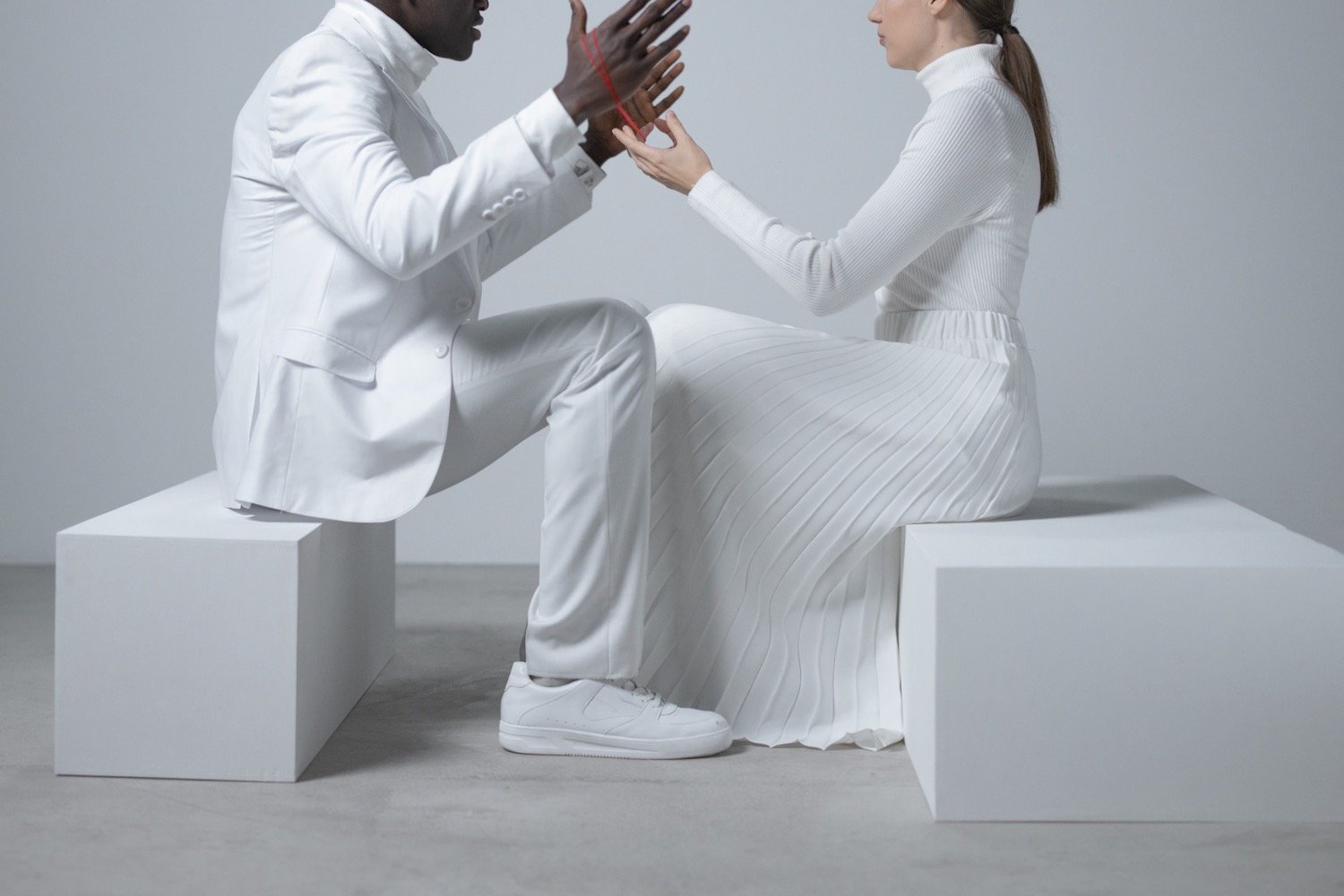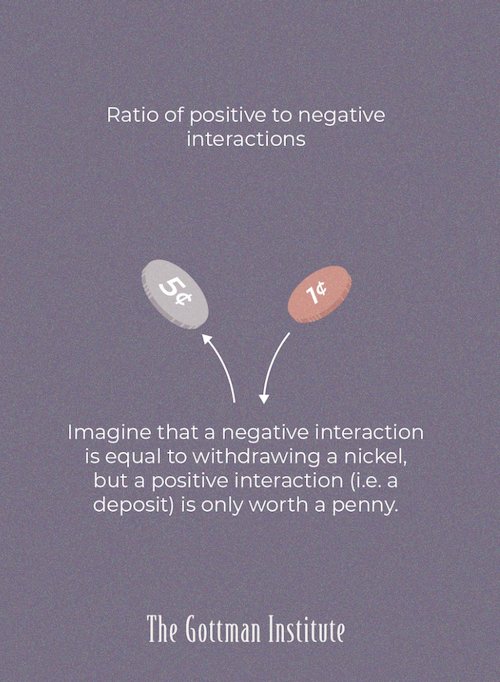This “Magic Ratio” Can Predict Whether You Will Stay Happy Or Get Divorced With 90% Accuracy
by Carolyn Firestone
Relationships are rarely (never) a conflict-free zone. We all have those moments when we wish we could rewind over our rant or fast forward through our spouse’s three-hour silent treatment.
Most of us have spent an entire day having off interactions with our partner followed by a night doom scrolling our brain over what it could mean. And every so often we stop to wonder, how much of this normal? Or even okay?
It would be nice to get a hard answer – like a number. For instance, how many times is it acceptable for my husband to ignore me asking him to not hang his dirty workout clothes on the clean towel rack before it’s grounds for divorce? Or how many hours should my husband spend patiently listening to me come 72% unglued over our now sweat-soaked towels?
Image from Twitter
Well, my friends we may have the answer. Not exactly a single number but a ratio. A “magic” little ratio developed by acclaimed therapist Dr. John Gottman, who’s spent nearly half a century scientifically studying couples. Here’s what he came up with.
5-TO-1
For a couple to be “happy,” they must have five positive, connected, and just plain nice interactions for every one rocky, tense, just plain unkind interaction.
Interesting, no?
Gottman discovered in his studies that couples who are unhappy tend to tip the scales so their negative interactions outnumber those sweet, acknowledging, attuned moments by at least 5-to-1. And we need those sweet interactions to counteract any tension and remind ourselves, “Hey, we still actually like each other.”
Apparently, this ratio applies to the ways we behave not just throughout a given day but within a given moment of conflict. Even as things are heated, balancing five tumultuous exchanges with one solid good one, can make all the difference.
THE GOOD
A positive interaction can consist of something as small as a 6-second kiss all the way up to 5 life-altering but deeply doable habits we engage in to ensure our relationship stays in the green.
And because we love a visual almost as much as we love a ratio, here are some examples of what those positive interactions can consist of straight from The Gottman Institute itself.
THE BAD
As for the negative interactions that are the most taxing to a relationship, Gottman describes what he calls the Four Horsemen, which are four specific patterns couples engage in that can help predict whether their relationship will reach its own apocalypse.
These include:
Criticism: A tendency to talk about the other person as if they’re flawed
Contempt: A sense of disdain for the other person which can lead to a sort of meanness, mockery, or sarcasm that comes from a harsh place, even when it’s subtle
Defensiveness: An unwillingness to acknowledge or take responsibility for any mistakes or flaws
Stonewalling: The act of shutting down, turning away, and avoiding efforts to resolve conflict, particularly because the person feels flooded and like they need to check out emotionally
It’s not uncommon for couples to relate to some of these behaviors as part of their dynamic. The important thing to note is that there are actual anti-dotes to these ways of treating each other that can truly transform the relationship.
Not only can we improve upon our communication and relating style to have healthier exchanges that make each person feel seen, understood, and connected, but by ensuring we keep our positive interactions consistent, infusing the light-hearted, acknowledging, and loving ways we treat each other into more of our interactions, the better odds we give ourselves of staying close and really enjoying each other for the long-haul.
carolyn firestone
Carolyn is the Managing Editor of The Candidly. Her favorite thing to do is to write about her favorite things, especially when they have even the slightest chance of making someone else’s something (mood, relationship, travel plans, or toiletry kit) a little better. You can find more of her articles here.
This article is for informational purposes only. It is not intended to be used in place of professional advice, medical treatment, or professional care in any way. This article is not intended to be and should not be a substitute for professional care, advice or treatment. Please consult with your physician or healthcare provider before changing any health regimen. This article is not intended to diagnose, treat, or prevent disease of any kind. Read our Terms & Conditions and Privacy Policy.










